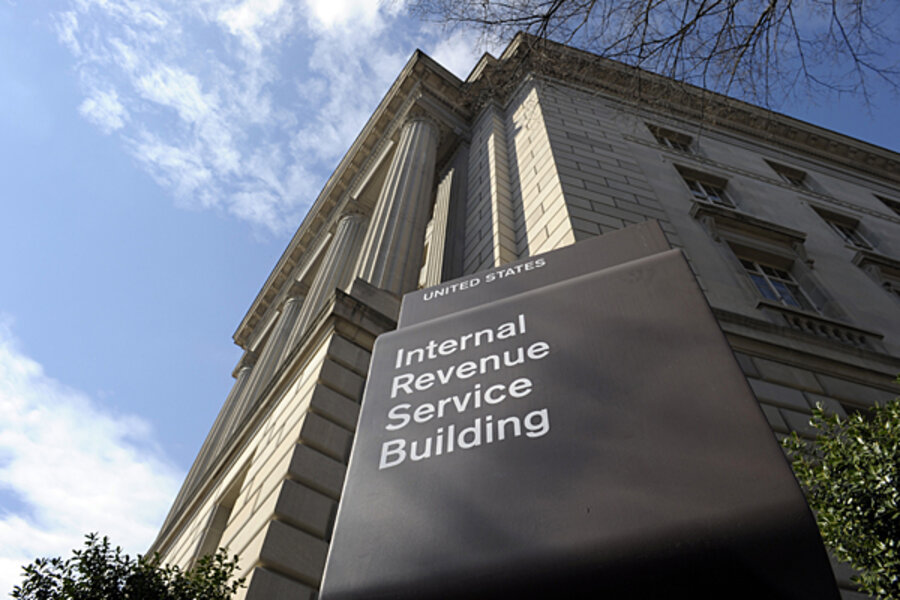Finished 2012 taxes? Plan for '13.
Loading...
Computer screens glow late into the night. Piles of receipts spill onto the floor. America's tax season is in full swing and the end is in sight.
But before you close the books on 2012, spend a few minutes thinking about taxes for 2013. Lower- and middle-income Americans can plan for tax breaks temporarily preserved this year. High-income Americans will need a strategy to handle the increased taxes coming their way.
Perhaps the best tax news for 2013 is that rates will stay the same for most taxpayers. But you'll have to act fast to take advantage of several tax breaks slated to disappear in 2014. Unless Congress acts, this is the last year teachers will be able to deduct as much as $250 in their out-of-pocket expenses for classrooms.
Ditto for homeowners paying mortgage insurance and tax-payers age 70-1/2 and older who withdraw as much as $100,000 from their traditional individual retirement account to give to charity. Normally, with-drawals from a non-Roth IRA are included as taxable income. The American Opportunity Tax Credit, which allows families to deduct as much as $2,500 in tuition-related expenses, has been extended through 2017.
It's not so rosy for those with big medical bills. Instead of being able to deduct any of those expenses above 7.5 percent of their adjusted gross income (AGI), this year's threshold is 10 percent.
There's also a new $2,500 limit on flexible spending accounts, which employees use to pay health expenses with pretax dollars. But "a lot of people had been moving to HSAs [health savings accounts] anyway," says Mark Luscombe, principal analyst at CCH Tax & Accounting based in Riverwoods, Ill. "So the overall impact of this might not be as great as it once might have been."
For high-income taxpayers, the outlook is even more clouded – and not only by that new 39.6 percent tax bracket for those earning $400,000 or more a year. Even if their paychecks are smaller than that, many high-income Americans face a number of new taxes and limitations that will eat away at their income.
One of the most visible new taxes is a Medicare surcharge known as the Net Investment Income Tax. For individuals with a modified AGI above $200,000 (or $250,000 if married and filing jointly), Uncle Sam this year will begin assessing a 3.8 percent tax on what they earn above that. The tax can be assessed against wage income or on investment income (taxable interest and dividends, capital gains, royalties, etc.), whichever is smaller.
Then there's the Medicare payroll tax, which charges an extra 0.9 percent on wage income above the $200,000/$250,000 thresholds. These two taxes combine in different ways, as shown in this example from Fidelity Investments:
If Paul and Ann make $330,000 in wages and $42,000 from their investments, their modified AGI is $372,000. That puts them $122,000 over the $250,000 threshold for the Medicare surcharge for married couples filing jointly. But because their investment income ($42,000) is less than that, they'll only owe 3.8 percent on $42,000, or $1,596. They'll also owe an extra 0.9 percent – the Medicare payroll tax – on wage income above $250,000. In this case, that works out to $80,000, triggering a tax of $720.
Couples wanting to reduce that $2,300 tax bite will have to come up with a tax strategy.
"There are quite a few things that have to be done for people in that category," says Rick Rodgers, a certified financial planner in Lancaster, Pa., and author of "The New Three-Legged Stool: A Tax-Efficient Approach to Retirement Planning." The strategy will depend on the level of a taxpayer's wage and investment income.
If the priority is reducing wage income, taxpayers should try to time when they receive income and bonuses and when they make charitable contributions, says Tim Barry, a tax principal at BlumShapiro, a regional accounting firm based in West Hartford, Conn. If the strategy is to reduce investment income, then taxpayers may want to engage in tax-loss harvesting (balancing out investment gains by selling other investments at a loss).
High-income Americans will take other hits in 2013. While the capital gains tax rate stays the same for low- and middle-income earners (0 and 15 percent, respectively), it jumps to 20 percent for individuals earning more than $400,000 ($450,000 for married filing jointly).
Another wrinkle: Deductions are phased out as income increases. The personal exemption generally allows taxpayers to reduce their taxable income by $3,900 for themselves, another $3,900 for a spouse, if applicable, and for each dependent child. But starting with individuals earning $250,000 ($300,000 for married filing jointly), the exemption begins to phase out. It disappears completely for couples earning $422,500. Those taxpayers also face reductions in popular itemized deductions, such as for mortgage interest and property taxes, although they never disappear completely.
The new code could well change how high-income taxpayers invest, says Mr. Barry of BlumShapiro. Municipal bonds may become much more popular among the wealthy because their tax-exempt income can help reduce the bite from federal taxes.







